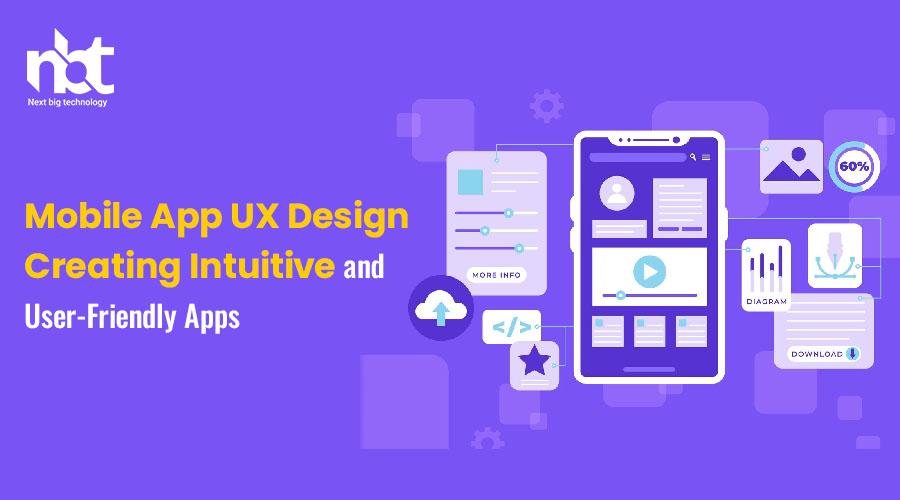Table of Contents
Introduction
Mobile apps have become an integral part of our daily lives, serving diverse purposes from communication to productivity. As the demand for mobile applications continues to rise, developers face the challenge of not only delivering functionality but also ensuring a positive user experience. In this fast-paced digital era, users expect apps to be intuitive, easy to navigate, and visually appealing.
Understanding User Experience (UX) Design
User Experience (UX) design goes beyond aesthetics; it focuses on how users interact with and experience an app. It encompasses a range of factors, including usability, accessibility, and overall satisfaction. Effective UX design is a key differentiator in a competitive app market, influencing user retention and engagement.
The Role of Mobile Apps in Today’s Digital Landscape
The prevalence of smartphones has elevated the significance of mobile apps. Users rely on apps for everything from shopping and socializing to managing finances. As a result, creating an app that meets user expectations for a seamless experience has become paramount.
Challenges in Mobile App UX Design
Despite the importance of UX design, developers often face challenges in creating optimal user experiences. Common pitfalls include complicated navigation, inconsistent design elements, and performance issues. Overcoming these challenges is crucial to retaining users and ensuring the success of an app.
Principles of Intuitive Design
Intuitive design is at the core of a positive user experience. Simplicity, clarity, and consistency are key principles that guide designers in creating interfaces that users can easily understand and navigate. By adhering to these principles, developers can enhance the overall usability of an app.
User-Centered Design Approach
Understanding the target audience is fundamental to successful UX design. A user-centered design approach involves researching user preferences, behaviors, and pain points. By incorporating user feedback throughout the design process, developers can tailor apps to meet the specific needs of their audience.
The Iterative Design Process
Mobile app development is an iterative process that involves constant refinement. Prototyping and testing are essential stages in this process, allowing developers to identify and address issues early on. By embracing an iterative approach, developers can ensure continuous improvement based on user feedback.
Responsive Design for Various Devices
With users accessing apps on a variety of devices, ensuring a consistent experience across different screen sizes is imperative. Responsive design involves adapting the app’s layout and features to accommodate various devices, providing users with a seamless experience regardless of the device they use.
Navigation and Information Architecture
Designing an intuitive navigation flow is critical to user satisfaction. Users should be able to easily find what they’re looking for without feeling overwhelmed. Organizing content logically and providing clear pathways within the app contribute to a positive user experience.
Visual Elements in Mobile App Design
Visual elements play a significant role in user engagement. Choosing the right color schemes, fonts, and imagery contributes to the overall aesthetic appeal of the app. Striking a balance between visual appeal and functionality is essential for creating a well-rounded user experience.
Load Time and Performance Optimization
Users have little patience for slow-loading apps. The speed at which an app loads and performs directly impacts user satisfaction. Developers must employ optimization techniques to ensure swift and efficient performance, minimizing the risk of users abandoning the app due to delays.
Accessibility in UX Design
Inclusive design considers users with disabilities, ensuring that everyone can access and use the app. Designing for accessibility involves providing alternative text for images, offering customizable font sizes, and implementing features that accommodate diverse needs.
User Onboarding Strategies
The onboarding process is the user’s first interaction with an app. A seamless onboarding experience sets the tone for the user’s journey. Guiding users through the app’s features and functionalities during onboarding increases the likelihood of user engagement and retention.
Measuring Success: Analytics and User Feedback
Evaluating the success of a mobile app requires a combination of analytics and user feedback. Utilizing analytics tools helps track user behavior, identify popular features, and measure overall performance. Additionally, paying attention to user reviews and ratings provides valuable insights for future updates and enhancements.
Conclusion
In conclusion, Mobile App UX Design is a multifaceted discipline that significantly influences the success of an app. Creating intuitive and user-friendly apps involves understanding user behavior, embracing a user-centered design approach, and continuously refining the design based on user feedback. Developers who prioritize UX design contribute to a positive digital experience for users and stand out in a competitive app market.
Frequently Asked Questions (FAQs)
- Why is UX design crucial for mobile apps?
- UX design enhances user satisfaction, engagement, and retention, contributing to the overall success of a mobile app.
- What are the common challenges in mobile app UX design?
- Common challenges include complicated navigation, inconsistent design elements, and performance issues.
- How does responsive design benefit mobile app users?
- Responsive design ensures a consistent user experience across different devices, catering to a diverse user base.
- Why is the onboarding process important in mobile app development?
- The onboarding process sets the tone for the user’s experience, influencing engagement and retention.
- How can developers measure the success of a mobile app?
- Success can be measured through analytics tools, tracking user behavior, and paying attention to user reviews and ratings.
Thanks for reading our post “Mobile App UX Design: Creating Intuitive and User-Friendly Apps”. Please connect with us to know more about Mobile App UX Design.






















